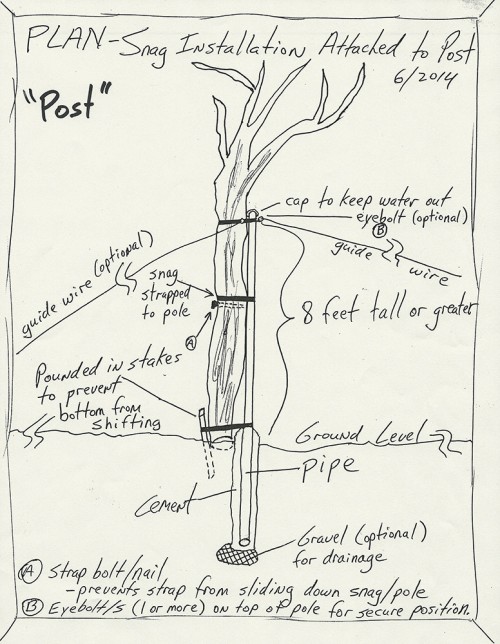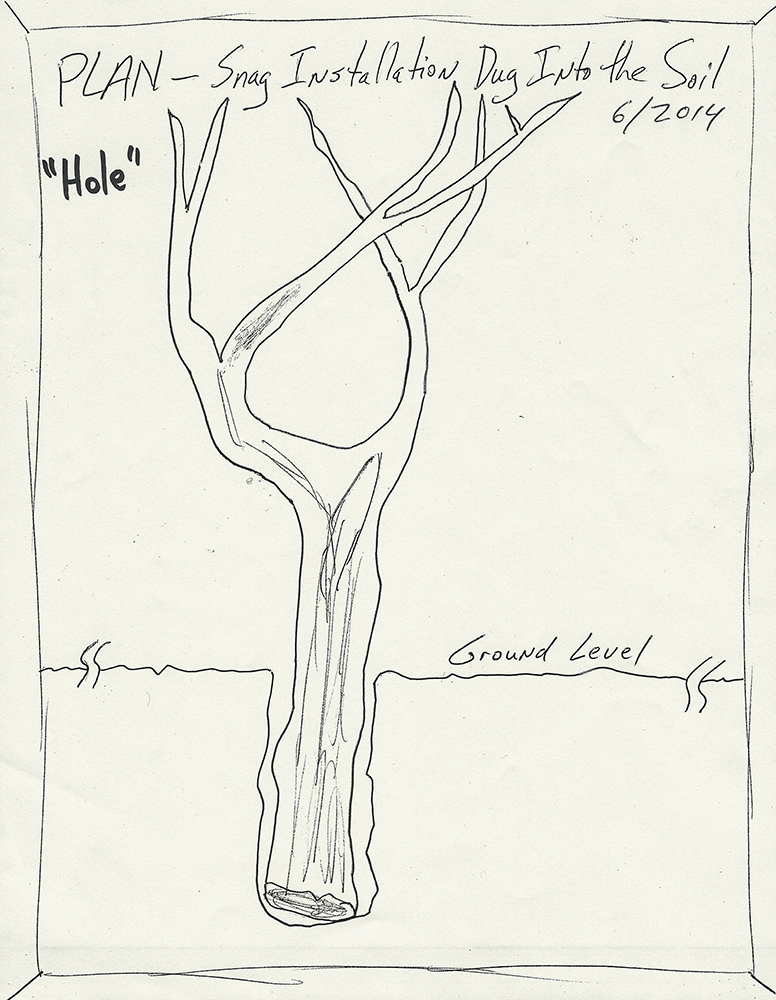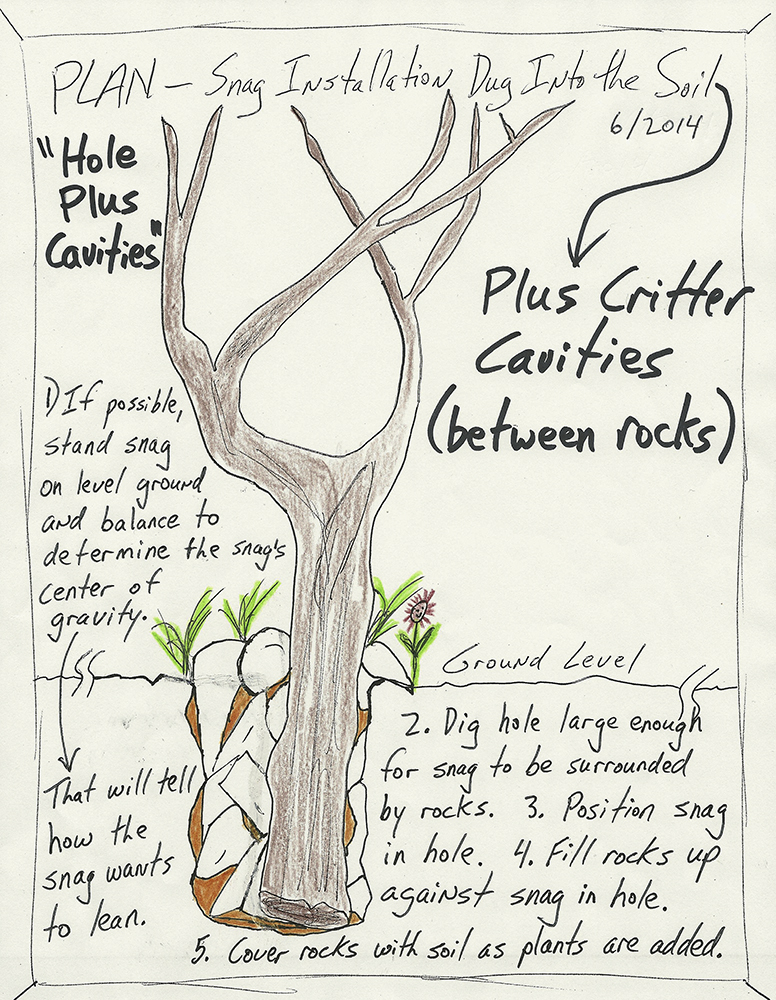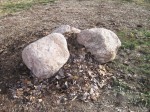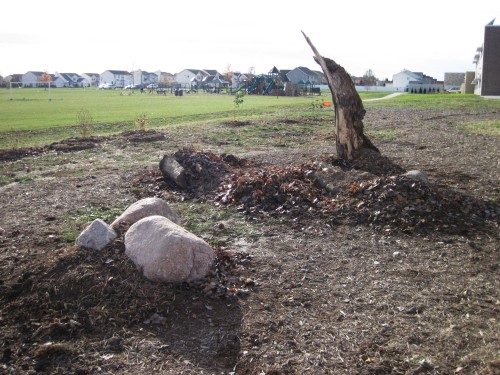
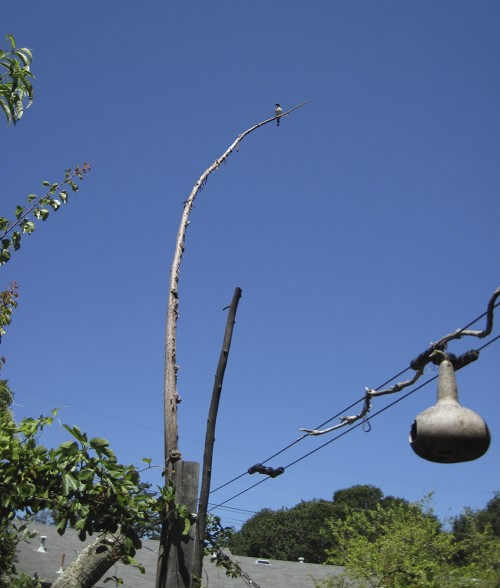
Scrub Jay atop Gondola Perch, enjoying its lookout vantage point above Tony’s garden. A very long redwood tree limb has been lashed vertically to the heavy-duty post that suspends cables for grape and fig vines.
Every month, I write an article for Native Plants and Wildlife Gardens. This month’s article was Pipevine Swallowtail Hummock – A Habitat Installation yesterday — my articles appear at that blog every 14th of the month.
This article is my response, in pictorial detail (sometimes I just want to draw up plans!), to a comment requesting ideas for what to do with part of a dead tree being removed by a neighbor. Dead trees left to weather time are called snags. So this article is about how to install a snag.
Post
As the first photo of this article demonstrates, a snag, or long tree limb, can be lashed to a vertical post. The picture above, “Post”, is a simple diagram of doing just that. The heft of the pole required will be determined by the expected weight and wind resistance of the snag or tree limb. Think heavy wind, heavy rain. Think heavy, rain-soaked wood being twisted by the wind. Fill the pipe with cement if possible. Use a salvaged pipe to lower cost. An old pipe will develop a beautiful, rich red-brown patina: rust. Benefit: Pole is sunk once, can be used for multiple snag installations.
Downside: Not much happening underground in the way of habitat cavities.
Hole
Now we are getting somewhere; we have dug a hole to secure the snag upright. The wood of the snag is now receiving soil-to-wood contact. That soil-wood interface creates a WELCOME mat for an enormous array of critters to leave the soil and enter into or crawl onto the wood. My general rule for supporting fairly consistent weight (the diameter of the pole/log does not vary much) is to dig the pole/snag in one third of its length. For example, a 15-foot pole would be dug in 5 feet. I might miss the foot or more of height I have lost in the hole but I will be happy to see the pole stand sturdily for many years.
Benefits: Wood-to-soil interface. No cement. Base of snag will rot — a cascading spectrum of Life will visit the garden.
Downsides: Base of snag will rot — will eventually fall.
Hole Plus Cavities
You do not have to go to India to visit the Taj Mahal! Yes, “Hole Plus Cavities” is my favorite option of the three plans diagramed. Know where the snag, or limb, or weight wants to lean/fall. When I move a hulking piece of wood, I find the center of gravity such that the massive weight can be held up by one finger. Finding the center of gravity will ensure that your resources are applied most efficiently. For example, your base rocks in the hole will become most effective if the snag is leaning in the correct direction.
Benefits: Large hole allows easier insertion of snag. Cavities, of varying sizes, between rocks invite critters, of varying sizes. The snag bulk can be larger because heavy, dense rock is keeping the base securely rooted. Only diagram with a smiley-faced flower. Lots of digging — the soil from the hole can be bermed/mounded to increase the site’s non-linear, less anal, aspect (let’s face it, most gardens are flat, boring!).
Downsides: Lots of digging — hard work. Care must be used to snugly pack rocks against snag. Settling of rocks over time will occur; will require testing strength of base on occasion.
Marilyn, Thank you for asking!
All, Enjoy your habitat creations. Habitat it!
Tony

